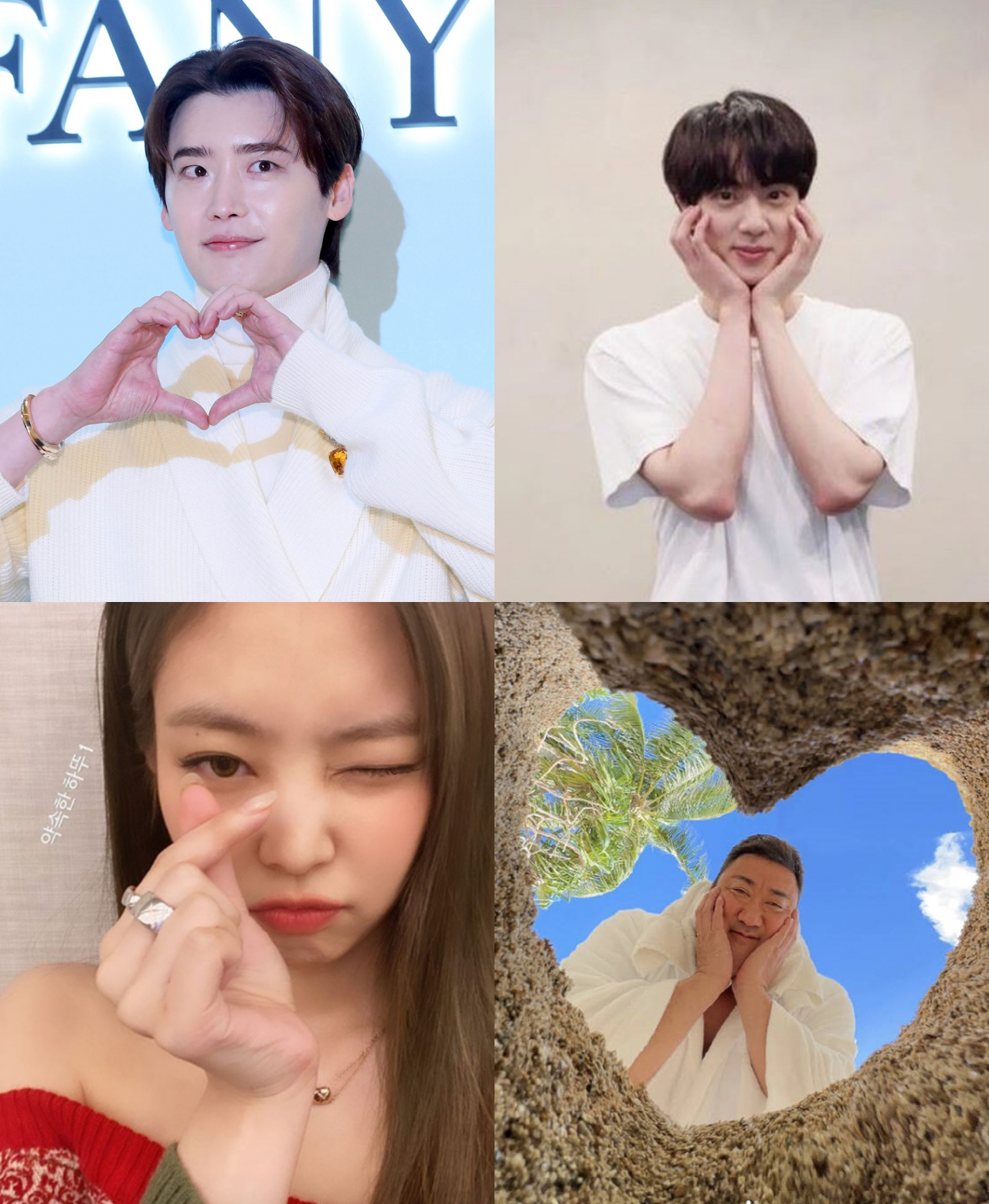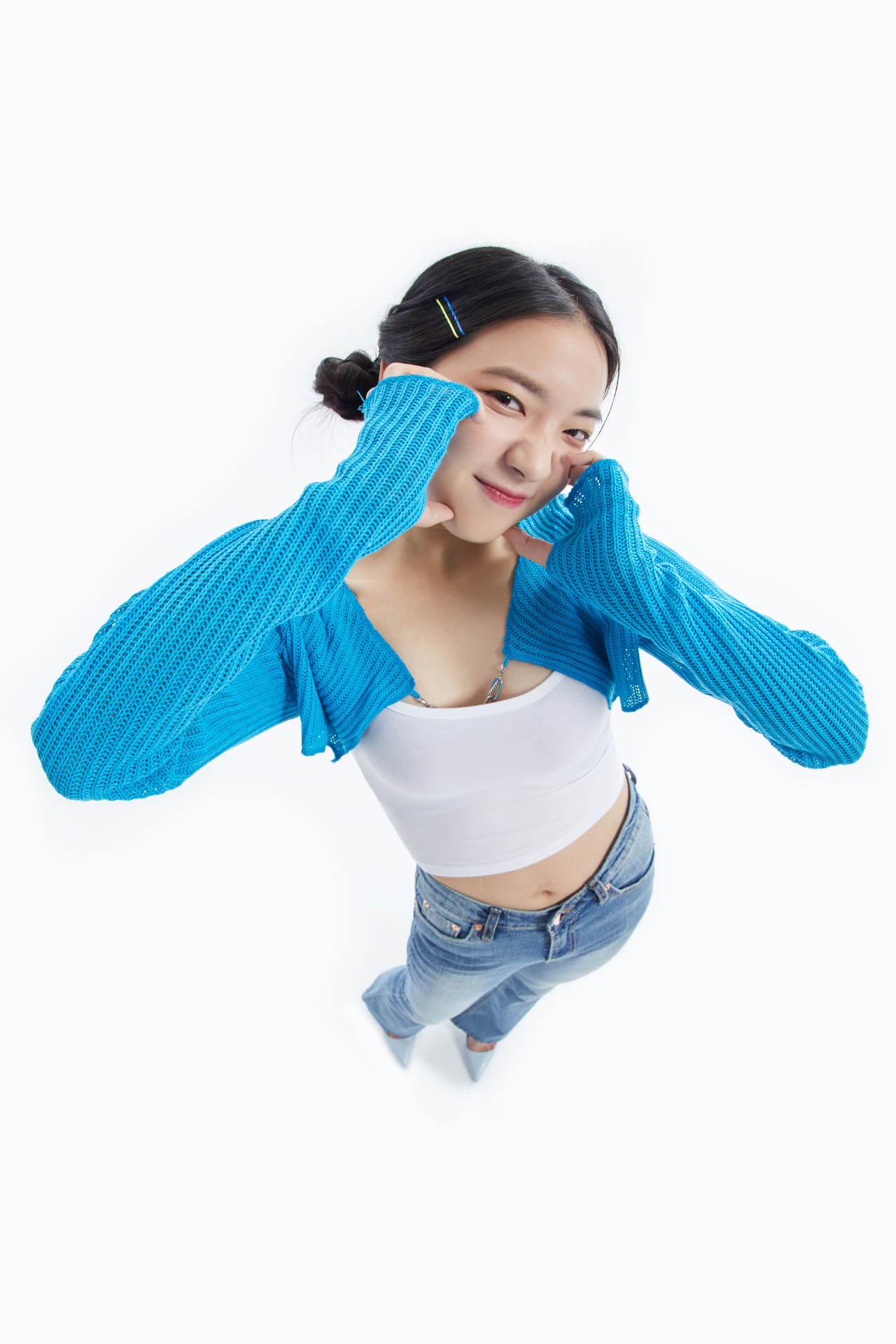 |
Clockwise from top left: Actor Lee Jong-suk, Jin from boyband BTS, actor Ma Dong-seok and Jennie from Blackpink (Newsis, Instagram of Jin, Ma Dong-seok and Jennie) |
“Cuteness or charm, esp. of a sort considered characteristic of Korean popular culture. Also: behavior regarded as cute, charming or adorable. Cf. kawaii n.” – Oxford English Dictionary
Ever encountered someone deliberately using or prolonging their “ng” or “o” sounds to sound cute? Like saying, “hajang,” instead of “haja” (let’s do it).
This intentional mispronunciation, akin to baby talk, functions as one form of "aegyo" -- a deliberate expression of cuteness that can be used in various ways to convey affection and playfulness.
While aegyo has been popularized through K-pop and Hallyu for entertainment purposes, it embodies more than just a pronunciation tweak, providing an insight into the ingrained culture of performative cuteness in Korean society.
 |
Getty Images |
What and why
Aegyo -- rooted in the hanja characters for “ae” meaning love and “gyo” meaning beautiful -- encompasses a spectrum of expressions, including vocal nuances, verbal cues, gestures and facial expressions, all aimed at conveying affection in a cute and coquettish way, to the point of being self-infantilizing.
The word is associated with youthfulness and childlike qualities, as exemplified by the Korean term “aegyosal,” which refers to a little pudge of fat under the eyes that is seen as charming for creating a rejuvenated appearance reminiscent of the soft, thick skin babies have under their eyes.
It could also include petlike displays of affection such as nuzzling against someone's arm like a puppy, or purring against someone's hand like a cat.
Aegyo also imparts a sense of lightness and lack of seriousness, as the Korean expressions likening something to aegyo suggest a low level of gravitas. For example, "This is aegyo compared to that," could be translated as, "This is nothing compared to that."
While perhaps not so commonly observed in other societies, the practice of aegyo, or the display of childlike or petlike behaviors that center around the appeal of cuteness is not exclusive to Korean culture. Similar tendencies can be found in other Asian cultures such as the Japanese kawaii aesthetic and the Chinese practice of sajiao, yet the applications and degrees of conduct vary to different extents.
According to "Korean Cuties: Understanding Performed Winsomeness (Aegyo) in South Korea," by Aljosa Puzar and Yewon Hong, published in the Asia Pacific Journal of Anthropology, “aegyo is distinctly ‘cultural,’” as “it encompasses distinct behavioral patterns, situational contexts and triggers, that is, it pertains to appropriate social times and places.”
In Korean social dynamics, individuals may employ aegyo naturally or strategically to win someone’s favor, adapting its various forms to all levels of social relationships, ranging from informal contexts such as romantic relationships to more formal ones like interactions with superiors at work.
The application of aegyo, whether conforming to social expectations or navigating social rejections, is largely centered on the pursuit of social harmony, as Puzar and Hong articulate in their paper.
"Utilizing aegyo can indeed prove beneficial in alleviating tensions within certain social scenarios," said Park, a university student in her 20s. "Aegyo comes naturally to me when I seek to calm my upset parents and friends, or when I want something from them.”
She further underscored that the pivotal factor for executing aegyo effectively involves the capacity to read the room, as it requires a certain level of emotional and social intelligence.
"Aegyo does not always yield the anticipated results," she explained. "Therefore, it's crucial to understand the context and discern when to employ it properly."
In terms of the cultural inclination toward aegyo, verging on the childlike, professor Kwak Keum-joo from Seoul National University's department of psychology suggested its pertinence to people's survival instincts.
She explained that aegyo functions as a social tool, aiming to elicit the desire in others to assist and protect the seemingly innocent performers. “The ability to emulate vulnerable childlike attributes in diverse forms is an instinctual inclination to form strong bonds with others,” Kwak explained.
“Just like babies know how to cling to their parents, aegyo practitioners can leverage the innocuous look created by aegyo to their advantage in social situations.”
 |
Jang Won-young of K-pop group Ive (JTBC) |
Gendered conduct?
Mostly observed in heteronormative relationships today, the concept of aegyo in South Korea traces back to the role of "gisaeng," government-trained courtesans who were tasked with serving and charming men of the upper class in the Goryeo Kingdom (935-1392) and Joseon era (1392-1910). They were obligated to gain the favor of men with high social standing, employing a certain set of behaviors deemed flirtatious and charming.
The historical legacy of particular gender norms in South Korea has prescribed specific characteristics for women and men, associating women with appeal and subservience and men with charisma and authoritative qualities. Aegyo has been perceived as a feminine quality, thereby implicating the patriarchal societal background in South Korea and underlining the constraining of female agency to a certain extent.
Puzar and Hong's research confirms that aegyo is “generally taken to be feminine,” serving purposes related to “softening the atmosphere of certain situations, entertaining or amusing superiors, or gaining career-related benefits.”
Nonetheless, Kwak noted that the power dynamics inherent in aegyo have been shifting in modern times, as the gender stereotyping associated with aegyo has become less defined.
“In contemporary times, there are many instances where women's maternal instincts take precedence in relationships, leading them to favor younger men capable of enacting aegyo for their ‘nuna’ (Korean for a boy's older sister) in a romantic relationship," she explained. “No longer confined to women, individuals of all genders now embrace and display cuteness in various social situations.”
In a similar fashion, this phenomenon is prominently evident in the global success of the Korean Wave, where the utilization of the aegyo aesthetic has become a vital means of captivating audiences worldwide.
K-pop idols and Korean TV celebrities, irrespective of gender or age, employ aegyo to cultivate intimacy with fans. This is showcased through distinctive gestures such as forming hearts with one's fingers and hands, as well as incorporating dance moves that flaunt aegyo aesthetics -- framing one's face with one's hands, to look like a flower, for example -- to enhance the charm of performances. On the flipside, performing aegyo sometimes verges on silliness, especially when the aegyo performer is making an effort to pull off exaggerated aegyo in the wrong social situation.
Yet, some express concerns that aegyo's excessive use could result in overlooking the importance of exhibiting age-appropriate behaviors. Placing too much value on being cute could potentially perplex adults who are not inclined to embrace a childlike demeanor for social advantages, local experts said.
"A to Z into the Korean mind" traverses the complexities of the Korean psyche, examining an array of mental and emotional phenomena and their cultural nuances through keywords in alphabetical order. – Ed.
 |
Getty Images |







![[Today’s K-pop] Blackpink’s Jennie, Lisa invited to Coachella as solo acts](http://res.heraldm.com/phpwas/restmb_idxmake.php?idx=644&simg=/content/image/2024/11/21/20241121050099_0.jpg)